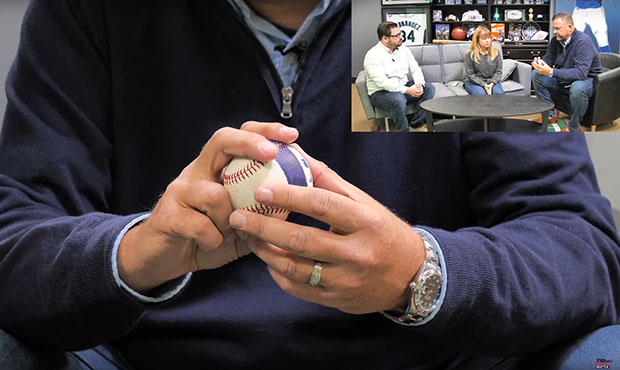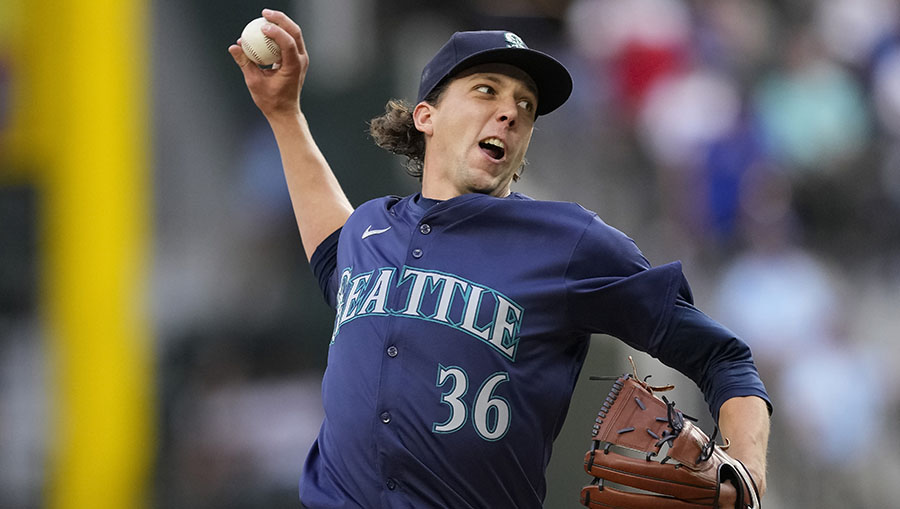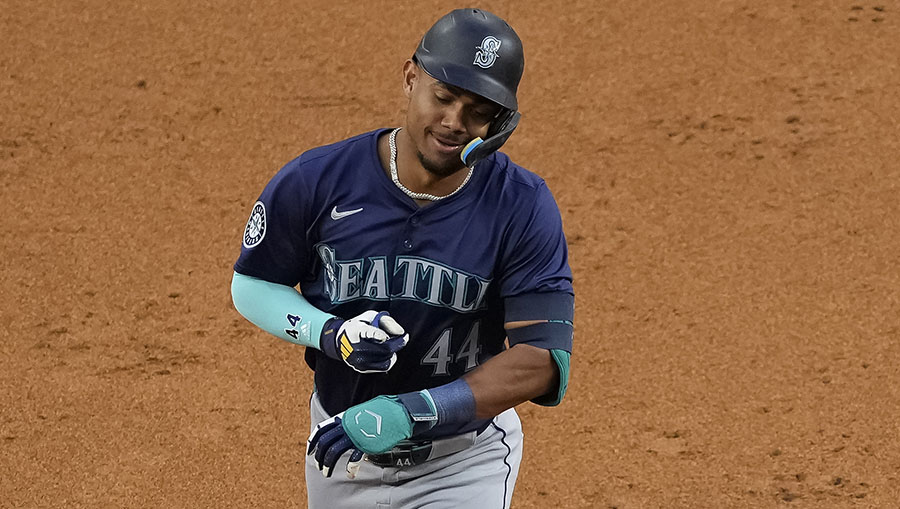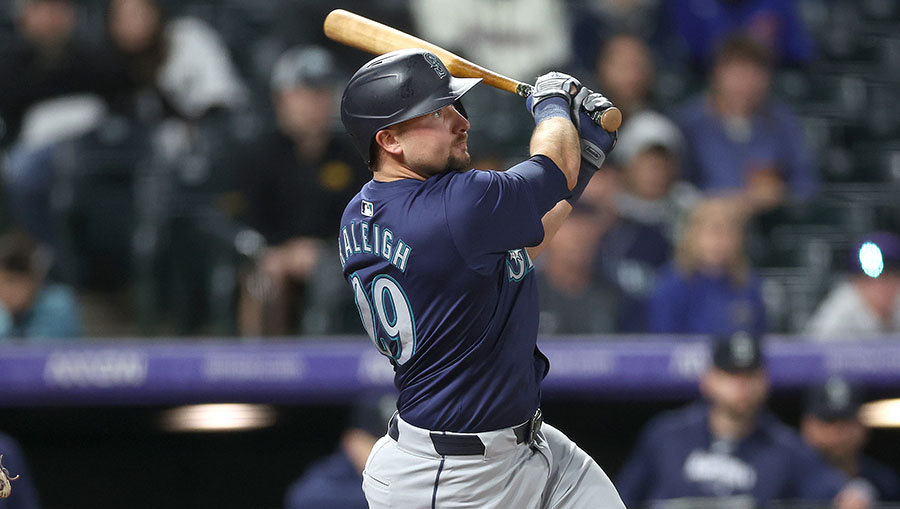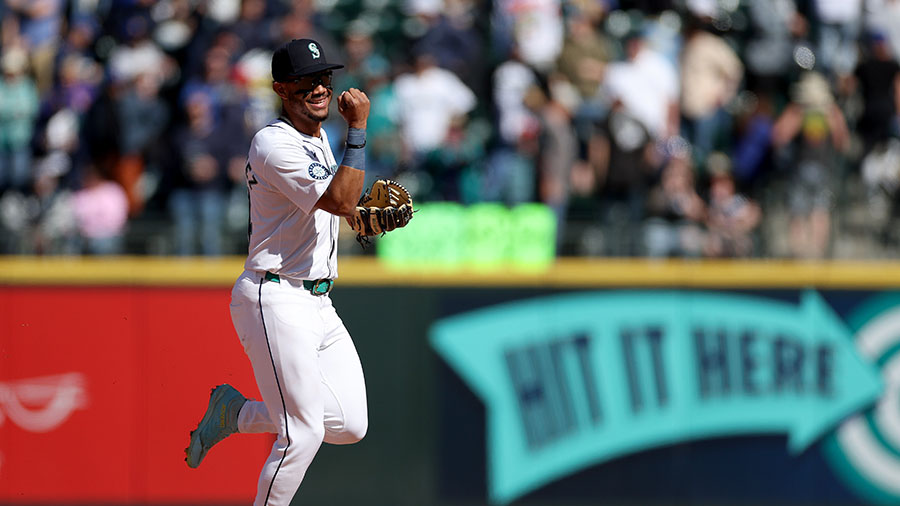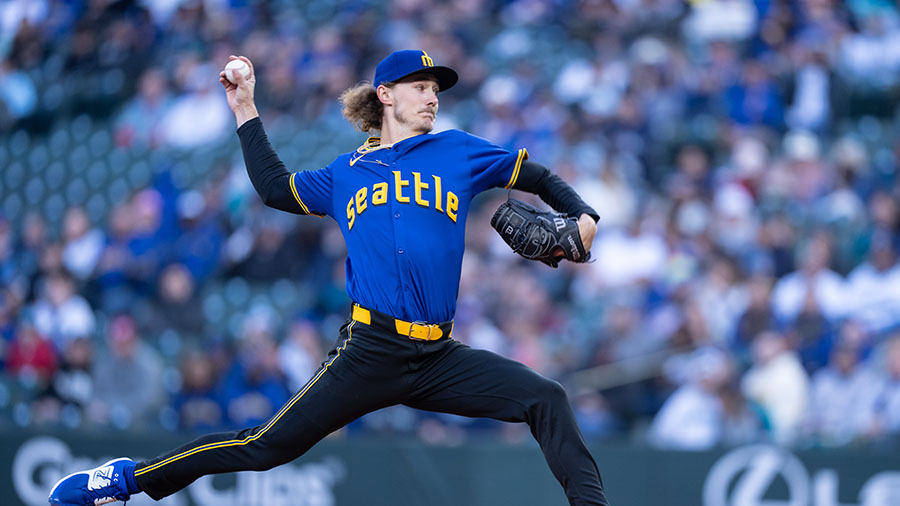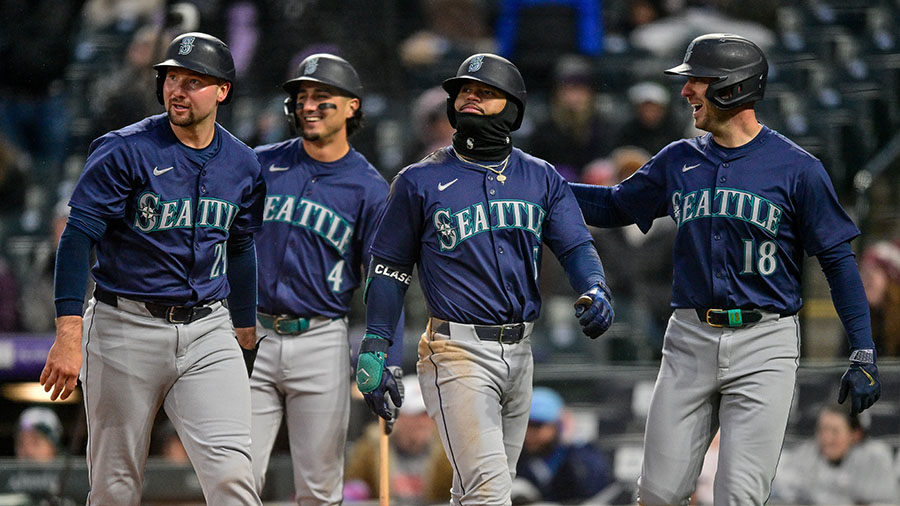Mariners Takeaways: Top things we learned from in-depth talk with bullpen coach Brian DeLunas
Nov 20, 2019, 1:23 PM
The Seattle Mariners are doing some different things with pitchers throughout the organization, especially in terms of using technology and understanding different analytics like spin rate.
Shannon Drayer’s latest Mariners notebook
To help people understand newer terminology and how coaching pitchers is changing in professional baseball, Mariners bullpen coach Brian DeLunas stopped by the 710 ESPN Seattle studios on Tuesday for a Mariners Talk video (more details here) with Shannon Drayer and James “Boy Howdy” Osborn.
Here are some takeaways from the first half of DeLunas’ conversation with Drayer and Osborn (watch out for part 2 next week).
Where Mariners rank in pitching philosophy, use of technology
DeLunas, who joined the Mariners from the private sector prior to the 2018 season after being Director of Pitching Development for CSE Baseball in St. Louis, gave the organization high praise right off the bat, saying it’s one of the best in baseball in terms of pitching philosophy and using technology for pitching improvement.
“I’d say we’re top five,” DeLunas said. “It’s tough to know exactly what everyone else is doing. There’s a lot of times where it’s easy to talk about an organization that does something really well, but that might be one team or that might be one person in that organization. … At the major league level, I’d say we’re way up there. Being able to have an overall plan that comes from the top (and goes) all the way to the bottom to be able to help guys, there’s not a guy in our organization that we don’t have a specific plan for.”
Having all the coaches, staff members and front office personnel buying in to the same mindset is beneficial as well.
“It’s been really cool to see that everyone is pulling the rope in the same direction.”
What is Rapsodo and how do the Mariners use it?
One of the tools the Mariners use for looking at pitchers and pitches during bullpen sessions is Rapsodo, a device that tracks and records pitches frame-by frame and produces data on things such as velocity and trajectory.
DeLunas compared the Rapsodo to a scale in the sense that you use a scale once to get your weight, and then the next time you use it “it has value” in terms of showing progress or lack thereof. The Rapsodo is similar in that it allows for comparisons and tracking of data.
“The Rapsodo in itself is not worth a lot until we have a baseline and we know kind of where we’re at,” DeLunas said.
Using Rapsodo allows for quicker analysis, which lets coaches help players faster.
“It’s going to tell you spin rate, it’s going to tell you your vertical break, your horizontal break,” DeLunas said. “The new version tells you your release height and what we call vertical release angle, which tells you is the ball coming up out of the hand? Down out of the hand? The breaking ball might be up, the fastball might be down. It gives you this instant feedback, so even if a pitcher is off a little bit in a particular bullpen, it allows us to know why. … It just expedites the process where I don’t have to guess what’s going on with the break or what’s going on with the spin.”
Understanding spin rate
Those who follow baseball often hear about the amount of spin some pitchers or pitches have. And if you don’t completely understand spin rate, don’t worry because you’re not alone. Even the experts are still learning about it.
“To be blunt, we are still all learning about spin rate,” DeLunas said. “Everyone wants this perfect scenario of high spin (on a) throw up and low spin (on a) throw down, and it’s not always the case. Release angle, release side, whether a person has some natural ride – we saw that a few years ago in (former Mariners reliever) Nick Vincent, who the way he threw the ball led him to throwing up in the zone.”
Ride, DeLunas explained, is the “carry up to the zone and through the top of the zone.” Sometimes, having a lower release height will give a pitcher’s pitch more ride.
A common thought when discussing spin rate is that more spin is always good and less spin is bad. DeLunas said that’s not really the case.
“The Major League average pitcher throws about 92-93 (miles per hour) and has a 2,200 (rotations per minute) average spin,” DeLunas said. “It’s not necessarily that high spin or low spin is good, it’s that the further we get away from the average, because the average is what the Major League hitter sees the most on a daily basis… If we can get that up into the 2,5000 (rpm range), you start to be an outlier. If you can start to throw sinkers or two-seam (fastball) pitches at the bottom of the zone at 1,800 (rpm), you really start to become an outlier.”
Where is high spin often good? When done right, it can prevent hard contact, especially when pitching at the top of the strike zone.
“High spin usually misses barrels more often because it’s producing more spin, and what it’s going to do is it’s not going to sink as much,” DeLunas said.
Changing spin rate
DeLunas said that growing up in baseball, you would often hear of pitchers using things like spit and grease, which take away spin. Nowadays, you’ll hear about pitchers using pine tar and similar materials to get a better grip on the ball.
“When we can enhance grip, typically we see that the spin will improve a little bit,” DeLunas said.
But those methods are all illegal. As far as legal methods to increase or change spin rate, there’s not much that can be done to drastically alter spin rate. It’s unique to the pitcher.
“If I had a pitcher it’s not, ‘OK, we’re going to go out and improve spin rate,'” DeLunas said. “We can try to improve ride, which sometimes will improve spin a little bit.”
Something you will see is potentially altering how a pitcher grips a baseball. For example, some pitchers when they bring their fingers closer together and on the seams for their four-seam fastball, the spin could increase to 2,350 rpm rather than the average 2,200. Similarly, slight variations of grips can also decrease spin rate for off-speed pitches like a splitter. DeLunas shows various grips off in the video.
DeLunas also talked about flat ground sessions for pitchers, biomechanics and much more in part 1 of the video. A second session with DeLunas will be published on 710Sports.com next week, as well as an audio-only podcast version that will include parts 1 and 2 together.
Follow 710Sports.com’s Brandon Gustafson on Twitter.
Former Mariners player Kristopher Negrón joins Seattle front office


